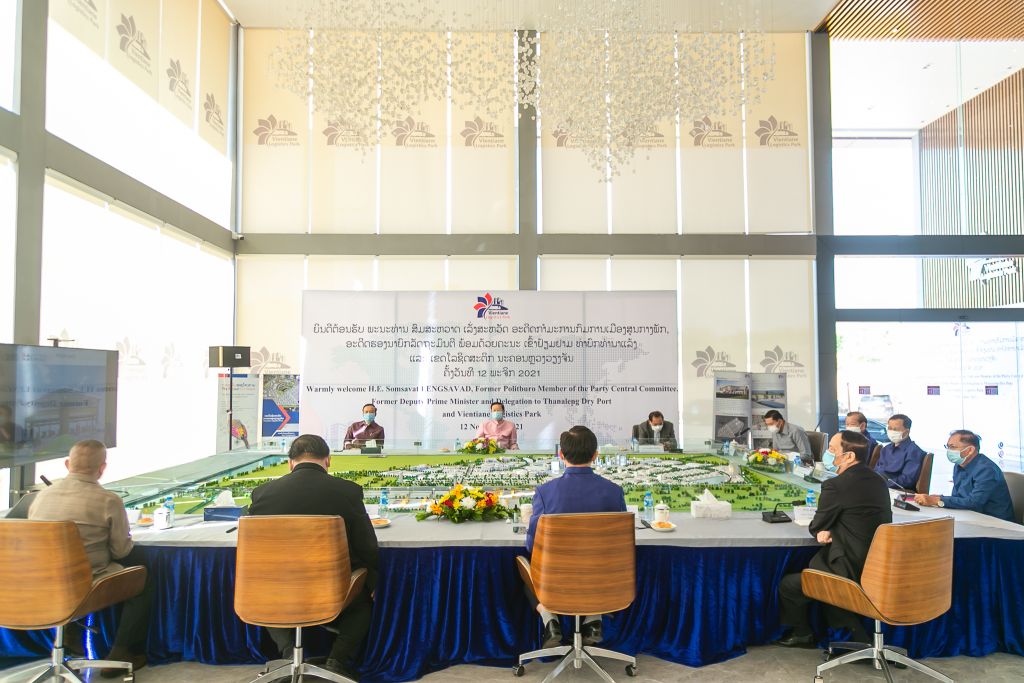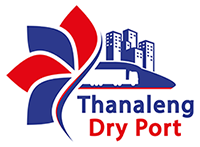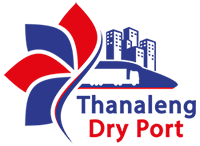
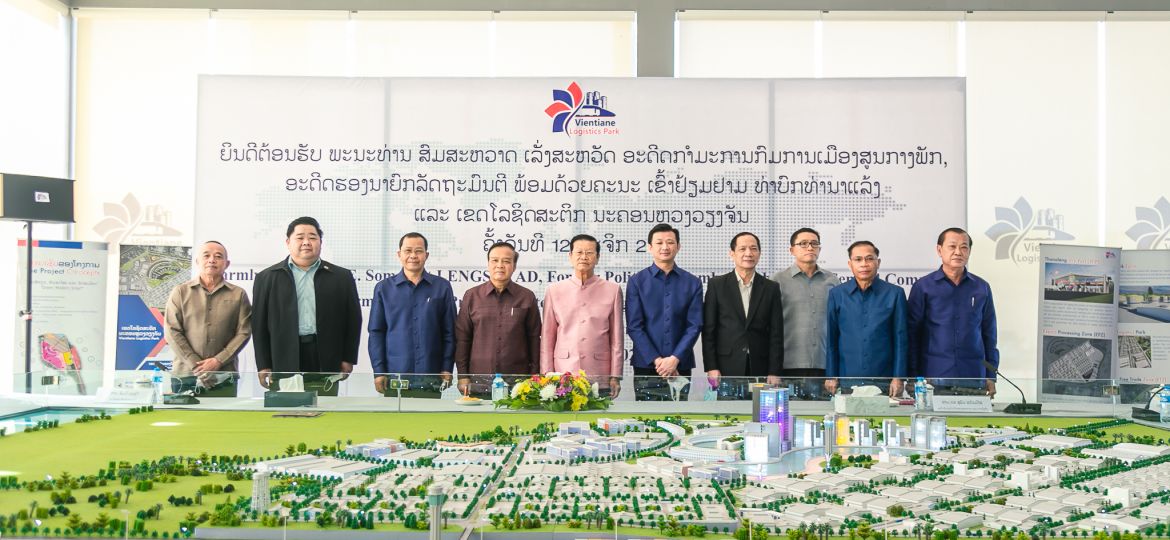
Former DPMs, Party’s theory advisor visit Thanaleng Dry Port, Vientiane Logistics Park
Former Politburo member and now the Party’s theory advisor, Mr Somsavath Lengsavad, and his delegation on Friday visited the Thanaleng Dry Port (TDP) and Vientiane Logistics Park (VLP), providing guidance on the effective operation of the mega project.
The former Deputy Prime Minister, who is now advisor to the Theory Council of the Lao {eople’s Revolutionary Party’s Central Committee, was welcomed by the Chairman of Vientiane Logistics Park Co., Ltd., Mr Chanthone Sitthixay, and former Minister to the Prime Minister’s Office and current President of the Executive Board of Strategy and Planning at PTL Holding Company Limited – the parent company of Vientiane Logistics Park Co., Ltd. – Mr Alounkeo Kittikhoun and other company executives.
Accompanying Mr Somsavath were former Deputy Prime Minister and now Head of the Economic and Finance Committee of the Theory Council of the Party Central Committee Somdy Duangdy, former Minister of Planning and Investment Dr Souphanh Keomixay, and Head of Secretariat of the Theory Council and Vice President of the National Socio-economic Science Institute Dr Kikeo Chanthabouly.
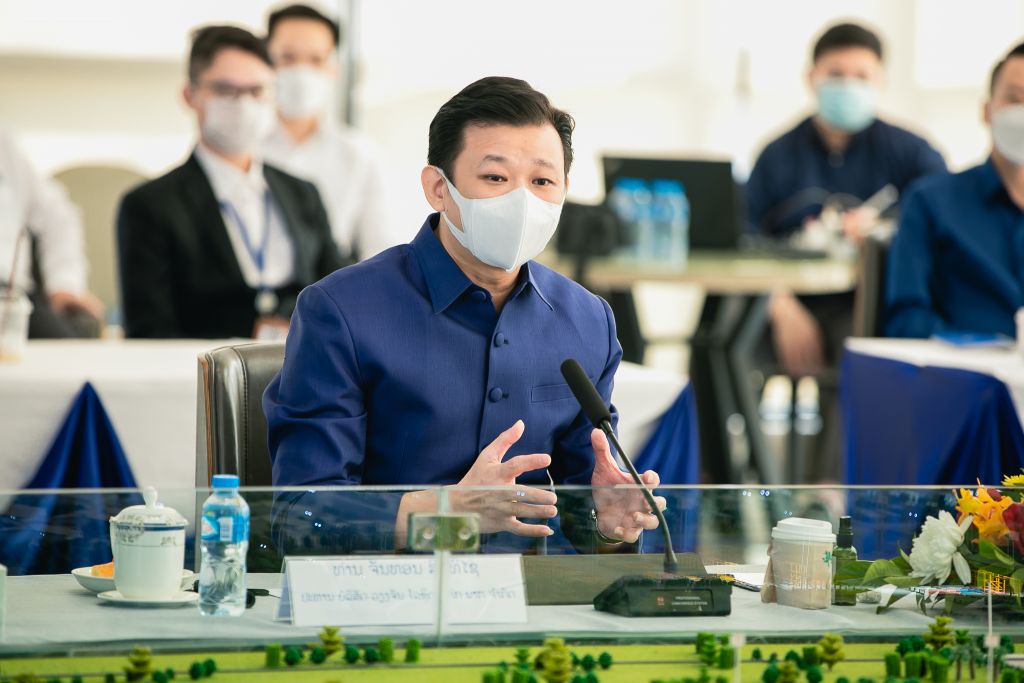
Mr Chanthone told the gust that the project being developed in Dongphosy village, Hadxaifong district, Vientiane, supports Laos’ vision to become a logistics and transport hub for countries in the region.
He was optimistic that this vision would become reality.
Located on a a prime site next to the Laos-Thailand railway station near the Laos-Thailand Mekong Friendship Bridge 1, the US$727 million project, which links to main roads, will also connect to the Laos-China railway.
The Laos-China railway, which is slated to open for service next month, links to China’s railway system, stretching further and reaching Europe.
The dry port and logistics park are part of the Lao Logistics Link (LLL) project and part of the Lao National Logistics Strategy for 2016-2030, which will boost the government’s efforts to transform Laos from a landlocked into a land-link country.
The LLL project also involves the planned 2,000MW coal-fired power plant in central Khammuan province, the Vung Ang seaport in Vietnam’s central Ha Tinh province that Laos and Vietnam have jointly developed and operated, and a planned railway linking Vientiane with the seaport.
Through this rail route, the TDP and VLP are also set to connect to other regional markets such as southern China, Japan, the Republic of Korea, Russia, the Philippines, and Indonesia.
The developer said each of the four projects under the LLL project, which the PTL Holding Company Limited has been given concessions to develop, are interlinked and will be mutually supportive.
Mr Chanthone explained that the coal-fired power plant will require a large amount of raw materials to be imported, which will support the operation of the seaport and planned railway.
He also predicted that a number of containers from Thailand’s Isan region will be shipped to regional and global markets via the dry port and the Vientiane-Vung Ang railway.
The dry port developer told Mr Somsavath and his delegation that parallel rail tracks will be built inside the dry port to enable the transfer of containers between the Laos-Thailand and Laos-China railways, which have different track sizes.
Managing Director of the dry port Sakhone Philangam told the delegation that the dry port, whose soft opening took place in September, acts as a border checkpoint for freight, similar to a seaport-based or airport-based transit area or international arrival zone, where procedures are streamlined to enable the free flow of trucks and freight.
Mr Sakhone said the streamlined procedures and management by the dry port are expected to reduce transport costs and increase business competitiveness.
It is expected that cross-border transport costs, especially at the friendship Vientiane-Nong Khai border crossing, will fall by 40 percent from current prices by 2025.
Mr Somsavath praised the developer on the work done to bring the project to fruition and pledged to extend support for the project.
He underlined the need for the developer to hold talks with all stakeholders preparing for service, to ensure that the dry port is made good use of by businesses.
The project comprises five zones offering various incentives and investment opportunities for investors including tax breaks.
The zones are as follows:
1.Thanaleng Dry Port (TDP) – the centre of international import and export trade with all categories of customs operations.
2. Tank Farm – a fuel distribution centre for Laos.
3. Logistics Park – a warehousing and distribution centre.
4. Free Trade Zone.
5. Export Processing Zone
